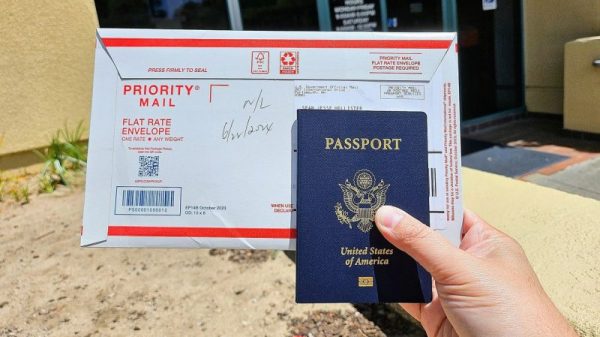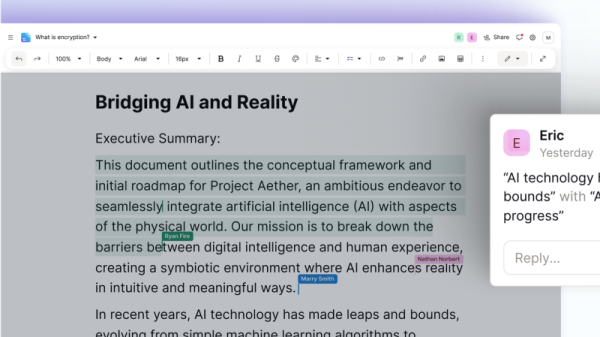Some of the most telling errors in recent legal history occurred when pro-Donald Trump lawyers faced the gargantuan task of trying to overturn the 2020 presidential election without any real evidence, on a tight timeline. These lawyers filed all manner of legal challenges using patently false claims about votes that were cast and counted. (These lawyers have faced and continue to face sanction for their efforts.)
Beyond the false claims, there were many basic factual flubs and typos. In the span of one week, Sidney Powell misspelled the word “district” three times, in three different ways, on the first page of two lawsuits. As I wrote at the time, the legal campaign was plagued by a kind of sloppiness that seemed to epitomize just how little care and consideration had gone into its efforts.
Which brings us to a new controversial ruling by a Trump-appointed judge. In an order celebrated by conservatives who have railed against what they perceive as government censorship of social media, U.S. District Judge Terry A. Doughty barred many U.S. officials from communicating with social media companies in the service of rooting out alleged misinformation.
But note the irony, as The Washington Post’s Philip Bump did: Doughty’s full-throated 155-page order contains its own misinformation.
At one point, Doughty refers to a statement from then-White House communications director Kate Bedingfield as taking place at a “White House Press Conference.” In fact, Bedingfield appears to have uttered the applicable comment on MSNBC — which Bump notes is a significant distinction given the context of the interview and how Doughty interprets the quote.
Doughty also appears to suffer from Powell’s affliction of making errors at the outset in a piece of legal writing. In his introduction, he cites a famous quotation — “I may disapprove of what you say, but I would defend to the death your right to say it” — attributed to the author Evelyn Beatrice Hall. Except he calls her Evelyn Beatrice Hill.
And in three of eight mentions of the Communications Decency Act, Doughty leaves the “s” off “Communications.”
Errors happen. I’ve made them. I will make them again. But there is something different about doing so in the context of — and at the top of — a potentially momentous legal ruling. That goes especially for one that Doughty had to know was going to make a splash. These are the kinds of things that really should be buttoned up.
(The decision to release the order on the Fourth of July would seem to reinforce that, as would Doughty’s declaration that “the present case arguably involves the most massive attack against free speech in United States history.” Many GOP claims about alleged government censorship have gone way beyond the available evidence.)
That said, these things have cropped up with high-ranking judges — possibly with more regularity than some people might realize. They can occupy gray areas: not provably false, but lacking the kind of substantiation you’d want to see in a judicial ruling. And often, they’ve come in highly political-sounding rulings like Doughty’s.
Just last week, Supreme Court Justice Sonia Sotomayor, in a dissent, invoked the Pulse nightclub massacre in Orlando while writing about how “a social system of discrimination created an environment in which LGBT people were unsafe.” But there remains no firm evidence that the massacre was motivated by anti-LGBT views, which government prosecutors reinforced at the trial of the shooter’s widow.
(Sotomayor, during oral arguments last year, offered a wildly wrong statistic about the number of children in serious condition from the coronavirus.)
A few months ago, a Trump-appointed federal judge in another controversial decision sought to halt use of the abortion pill mifepristone. Echoing antiabortion activists, District Judge Matthew J. Kacsmaryk offered claims that were at the very least loaded and contrary to scientific consensus — and, at worst, false. Among them were that mifepristone “ultimately starves the unborn human until death.”
Supreme Court Justice Clarence Thomas, in an opinion last year, wrote that two death-row inmates “do not dispute, and therefore concede, that their habeas petitions fail on the state-court record alone.” Except both parties in the case appeared to agree that this issue hadn’t been raised, so that argument couldn’t have been conceded. They agreed the record could be corrected, but the court declined.
Another case in which this type of sloppiness came up was back in 2020, when a federal district judge forced Louisville to allow drive-in church services during the pandemic. The judge, Justin Walker, said Mayor Greg Fischer (D) had “criminalized the communal celebration of Easter.” But while Fischer had initially said he would not permit such services, his office soon clarified, “This is not a law enforcement matter; it’s a community matter,” and no such order had been issued when the judge intervened. The mayor also said he attempted to clarify this to the judge, but the judge acted without giving the city a chance to respond.
Back in 2017, ProPublica discovered seven other errors in a “modest sampling of Supreme Court opinions written from 2011 through 2015.”
They included basic factual errors with little relevance to the ultimate outcome, but also vital statistics with real bearing on the issues at hand. At times, the justices relied on information from briefs or interest groups that the justices seemed to accept too willingly.
In one case, then-Justice Anthony M. Kennedy cited a stat that untreated sex offenders go on to commit new sex crimes at a rate “estimated to be as high as 80 percent.” That estimate? It was basically a guess from someone without any real subject-matter expertise.
Complaints about judicial errors date back decades, with legal scholar Kenneth Culp Davis waging an effort in the 1980s calling on the Supreme Court to establish its own research operation.
“The court may often be at its worst on policy issues that are dependent upon understanding or instincts about legislative facts,” Davis wrote at the time (“legislative facts” refers to facts with relevance to the issues at hand). “Indeed, my impression is that, typically, the court is basically baffled in trying to deal with legislative facts.”
With an increasing number of Americans doubting the judiciary’s legitimacy and these errors and disputes working their way into highly contentious opinions, you might think we’d see such an idea rekindled. At the very least, they could spring for some fact-checkers.
Some of the most telling errors in recent legal history occurred when pro-Donald Trump lawyers faced the gargantuan task of trying to overturn the 2020 presidential election without any real evidence, on a tight timeline. These lawyers filed all manner of legal challenges using patently false claims about votes that were cast and counted. (These lawyers have faced and continue to face sanction for their efforts.)
Beyond the false claims, there were many basic factual flubs and typos. In the span of one week, Sidney Powell misspelled the word “district” three times, in three different ways, on the first page of two lawsuits. As I wrote at the time, the legal campaign was plagued by a kind of sloppiness that seemed to epitomize just how little care and consideration had gone into its efforts.
Which brings us to a new controversial ruling by a Trump-appointed judge. In an order celebrated by conservatives who have railed against what they perceive as government censorship of social media, U.S. District Judge Terry A. Doughty barred many U.S. officials from communicating with social media companies in the service of rooting out alleged misinformation.
But note the irony, as The Washington Post’s Philip Bump did: Doughty’s full-throated 155-page order contains its own misinformation.
At one point, Doughty refers to a statement from then-White House communications director Kate Bedingfield as taking place at a “White House Press Conference.” In fact, Bedingfield appears to have uttered the applicable comment on MSNBC — which Bump notes is a significant distinction given the context of the interview and how Doughty interprets the quote.
Doughty also appears to suffer from Powell’s affliction of making errors at the outset in a piece of legal writing. In his introduction, he cites a famous quotation — “I may disapprove of what you say, but I would defend to the death your right to say it” — attributed to the author Evelyn Beatrice Hall. Except he calls her Evelyn Beatrice Hill.
And in three of eight mentions of the Communications Decency Act, Doughty leaves the “s” off “Communications.”
Errors happen. I’ve made them. I will make them again. But there is something different about doing so in the context of — and at the top of — a potentially momentous legal ruling. That goes especially for one that Doughty had to know was going to make a splash. These are the kinds of things that really should be buttoned up.
(The decision to release the order on the Fourth of July would seem to reinforce that, as would Doughty’s declaration that “the present case arguably involves the most massive attack against free speech in United States history.” Many GOP claims about alleged government censorship have gone way beyond the available evidence.)
That said, these things have cropped up with high-ranking judges — possibly with more regularity than some people might realize. They can occupy gray areas: not provably false, but lacking the kind of substantiation you’d want to see in a judicial ruling. And often, they’ve come in highly political-sounding rulings like Doughty’s.
Just last week, Supreme Court Justice Sonia Sotomayor, in a dissent, invoked the Pulse nightclub massacre in Orlando while writing about how “a social system of discrimination created an environment in which LGBT people were unsafe.” But there remains no firm evidence that the massacre was motivated by anti-LGBT views, which government prosecutors reinforced at the trial of the shooter’s widow.
(Sotomayor, during oral arguments last year, offered a wildly wrong statistic about the number of children in serious condition from the coronavirus.)
A few months ago, a Trump-appointed federal judge in another controversial decision sought to halt use of the abortion pill mifepristone. Echoing antiabortion activists, District Judge Matthew J. Kacsmaryk offered claims that were at the very least loaded and contrary to scientific consensus — and, at worst, false. Among them were that mifepristone “ultimately starves the unborn human until death.”
Supreme Court Justice Clarence Thomas, in an opinion last year, wrote that two death-row inmates “do not dispute, and therefore concede, that their habeas petitions fail on the state-court record alone.” Except both parties in the case appeared to agree that this issue hadn’t been raised, so that argument couldn’t have been conceded. They agreed the record could be corrected, but the court declined.
Another case in which this type of sloppiness came up was back in 2020, when a federal district judge forced Louisville to allow drive-in church services during the pandemic. The judge, Justin Walker, said Mayor Greg Fischer (D) had “criminalized the communal celebration of Easter.” But while Fischer had initially said he would not permit such services, his office soon clarified, “This is not a law enforcement matter; it’s a community matter,” and no such order had been issued when the judge intervened. The mayor also said he attempted to clarify this to the judge, but the judge acted without giving the city a chance to respond.
Back in 2017, ProPublica discovered seven other errors in a “modest sampling of Supreme Court opinions written from 2011 through 2015.”
They included basic factual errors with little relevance to the ultimate outcome, but also vital statistics with real bearing on the issues at hand. At times, the justices relied on information from briefs or interest groups that the justices seemed to accept too willingly.
In one case, then-Justice Anthony M. Kennedy cited a stat that untreated sex offenders go on to commit new sex crimes at a rate “estimated to be as high as 80 percent.” That estimate? It was basically a guess from someone without any real subject-matter expertise.
Complaints about judicial errors date back decades, with legal scholar Kenneth Culp Davis waging an effort in the 1980s calling on the Supreme Court to establish its own research operation.
“The court may often be at its worst on policy issues that are dependent upon understanding or instincts about legislative facts,” Davis wrote at the time (“legislative facts” refers to facts with relevance to the issues at hand). “Indeed, my impression is that, typically, the court is basically baffled in trying to deal with legislative facts.”
With an increasing number of Americans doubting the judiciary’s legitimacy and these errors and disputes working their way into highly contentious opinions, you might think we’d see such an idea rekindled. At the very least, they could spring for some fact-checkers.























